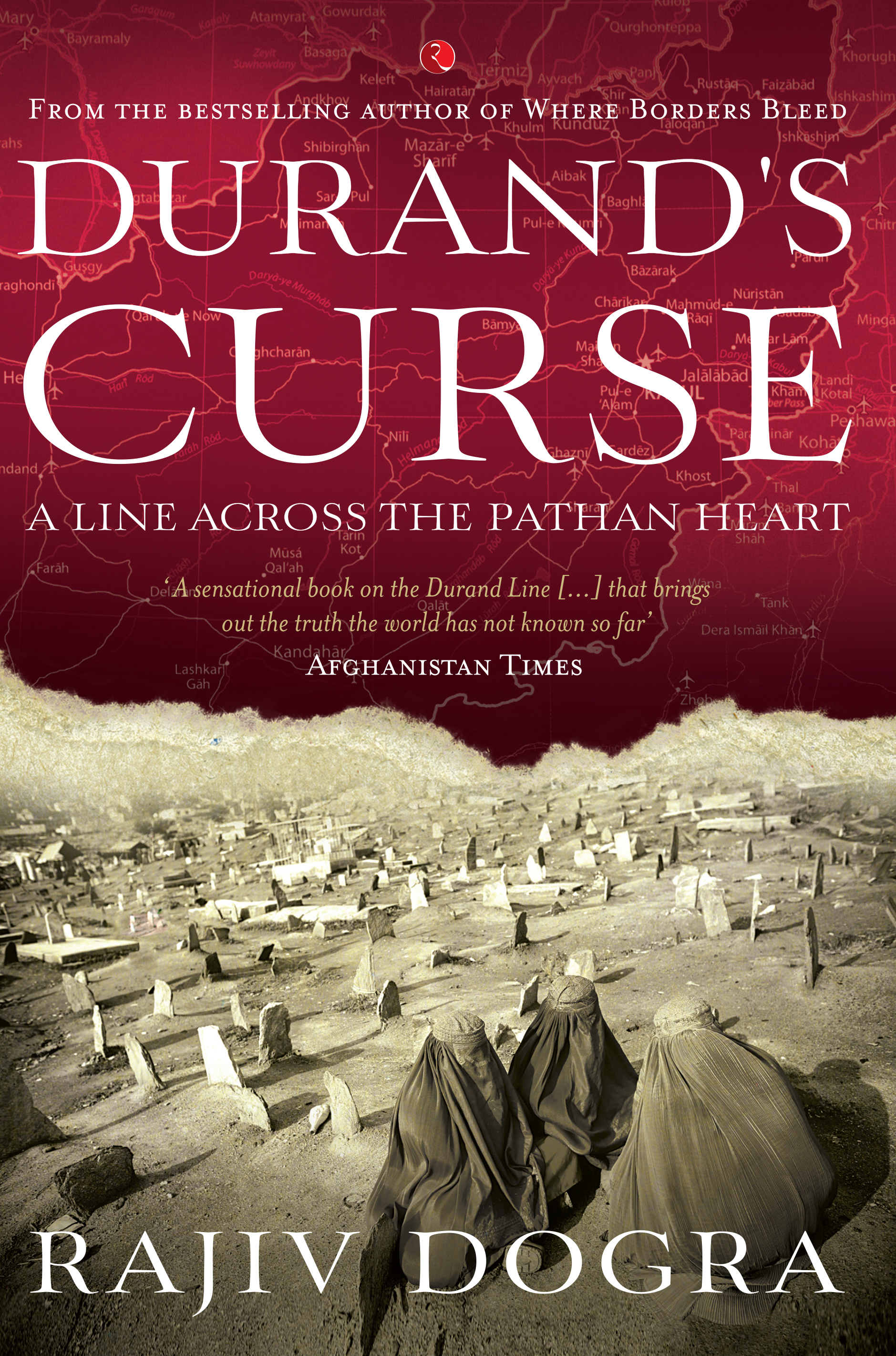Questioning why Pakistan started erecting a fence along the Durand Line – the de facto border between Afghanistan and Pakistan – best-selling author Rajiv Dogra set to work on his latest book, entitled Durand’s Curse – A Line Across The Pathan (Pashtun) Heart.
Billed as a “sensational” read, the recently published book digs into what Dogra describes as “Britain’s greatest crime of the nineteenth century” – the partitioning of Afghanistan.
The Durand Line is an arbitrary line drawn in 1893 by Sir Mortimer Durand, the then British diplomat and civil servant of the British Raj, and Abdur Rahman Khan, the Afghan Emir at the time, to fix the limit of their respective spheres of influence.
Durand’s Curse has been closely researched but the findings resulted in a tale of intrigue and deceit against Afghanistan and Dogra brings alive the wars, the tragedies and the Afghan anger against injustice in this account of Afghanistan’s misfortune.
Asked what people can expect from Durand's Curse, Dogra said that “Afghanistan is at a crossroads once again. It is painful to see these brave people suffer so much. The Taliban control 30 percent of its territory and threaten to expand further their control. Taking advantage of this flux, Pakistan wants to make the Durand Line into an international border between Pakistan and Afghanistan.”
He said: “We don’t realize this but it has also affected the region and the world. In fact the terrorism that torments the world today can in an important way be traced back to the British grab of 40,000-square miles of the Afghan territory in 1893.
“Discovering the how’s and whys of it was a fascinating exercise for me. Equally important was the extremely laborious and diligent pursuit that led me to discover how the British had hidden the deception from the world so far.”
He said he has provided “enough evidence to prove that the Durand Line was a temporary arrangement,” and that there is now the need for the world to correct a historical wrong.
“The best solution will be for the international community to recognize that the Pashtuns do not accept the Durand Line, and that their divided families want to be reunited,” he said.
He stated that it was “equally shocking to discover that the British had systematically kept under wraps the deception of the Durand Agreement. No one knew how Mortimer Durand made the Afghan Amir Abdur Rahman sign a document in English - a language that he could neither speak nor write."
"It was never meant to be a boundary as I have proved in my book. The Afghans have never accepted it. And every Afghan government has rejected this line."
Ideally speaking, the Afghan territory should begin at the Indus, he said.
"That is the natural and geographical boundary between India and Afghanistan because the culture, the language, the social mores and indeed the DNA of the people west of Indus are different from ours on this side of the Indus.
"But the British had a phobia of Russia. Consequently, they forced the artificial construct of a Durand Line on an unwilling and resentful population. Some call the Durand Line the biggest British crime of the 19th century," he stated in an interview.
In his book, Dogra states that an official British army publication, the Military Report on Afghanistan, reported in 1925 that the Durand Line was not described in the 1893 treaty as the boundary of India but as the eastern and southern frontiers of the Amir’s dominions – “the object being the extension of British authority and not that of the Indian frontier.”
“Nothing could have been clearer than this. A British army publication has a certain stamp of authority to it and it was giving out a definitive view. Is it not obvious then that Britain could not have passed on any territory of such a frontier to Pakistan?,” an excerpt from the book reads.
However, Dogra states in the book that “like many others, I too have puzzled over the mystery of the Durand Line. Why did the Iron Amir sign on the dotted line? Why were there no Afghans in the room when he signed it? Why, in his so-called autobiography, there is considerable detail about how he agreed to settle the northern boundary during his talks with Durand, but almost next to nothing about the frontier where he gifted away 40,000 square miles of Afghan lands to the British?”
Dogra however paints a clear picture about the Emir’s state of health at the time of signing the agreement and questions the role played by another British official, Salter Pyne, whom he said wielded a strange power over the then ailing Emir.
In an excerpt from the book, Dogra states “in the entire kingdom, Salter Pyne alone seemed to exercise some strange kind of hold over the Amir. Durand hints at it in his report.”
On the British Empire, Dogra writes that when “this weakened, the empire packed up, but it left behind the seeds of long-term discord. The British guiding mantra throughout the nineteenth and twentieth centuries can best be summed up as, ‘On principles there should be no compromise and on compromise there should be no principles.’
“To clarify, what it really means is this, where British interests are involved principles must be held supreme, but when it concerns the interests of others, principles could be given a wide pass by the British.
“As rulers, the British whims set the rules.”

About the Author:
Rajiv Dogra is a writer, television commentator and artist. A career foreign service officer, he was India’s ambassador to Italy and Romania, the permanent representative to the United Nations Agencies in Rome and the last consul general in Karachi.
An active public speaker, Dogra is one of India’s foremost commentators on foreign policy and strategic affairs and is noted for his considered and assertive views. He is the bestselling author of Where Borders Bleed, regarded as one of the most authoritative books on India–Pakistan relations. Durand’s Curse was published by RUPA Publications India.


